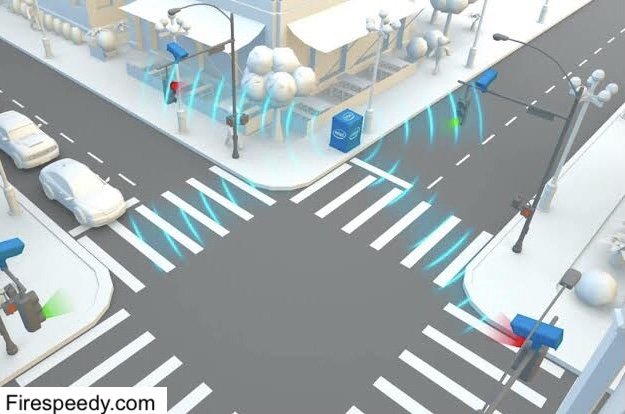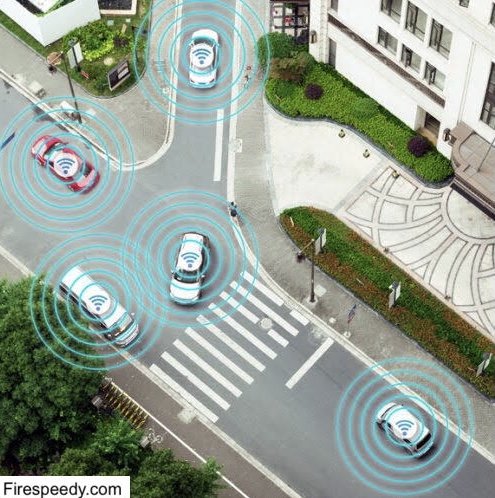Self-driving automobiles are much safer than ordinary human-driven vehicles. In fact, human error is the cause of more than 90 percent of serious crashes, implying that autonomous cars have the potential to significantly reduce the frequency of accidents and save lives.
Unfortunately, despite the progress, availability, and hype of self-driving cars (much like the hype of Cox internet offers), there are several challenges to overcome, like, detecting and anticipating pedestrians, coping with malfunctioning or dirty car sensors, and the car’s AI system’s ability to react when new and unusual road conditions popup. In this piece, our center of the discussion is going to be a pressing challenge “the need for more smart roads.”
The focus on technology should not be limited to cars, but should also include road infrastructure upgrades. Smart infrastructure will not only allow autonomous vehicles to better comprehend the roads, but it will also improve general road safety because autonomous vehicles are not really equipped to see around corners or other obstacles.
Table of Contents
Why Is It Important to Change the Road Infrastructure?

A majority of current road infrastructure was not developed with automated driving in mind since infrastructure renewal moves at a far slower rate than vehicle development. Infrastructure upgrades will be required to achieve a satisfactory level of road safety with automated driving. Drivers are accustomed to using traffic signals in the present road infrastructure. Autonomous vehicles, on the other hand, require a different form of an alert system as they happen to rely on radio and cellular network signals.
See also: Flying Car – Flying Car Technology and Prototypes
Motional’s AV is also being tested as part of a road infrastructure test in LA. They teamed up with Derq. to speed the implementation of AV. During this collaboration, the AV industry realized that smart roadways are more than a necessity. for optimal safety, transportation systems require smart infrastructure. The comfort and performance of autonomous vehicles, as well as the transportation ecosystem as a whole, can be improved with AI and video analytics.
The Present Road Infrastructure
The government created roads, traffic signals, and signage long before self-driving cars were a thing. Time has progressed and AVs require distinct alerts in the form of radio or cellular network signals. While drivers are familiar with traffic lights and signs that indicate when they should or should not drive, AVs don’t; rather, they rely on signals. Various self-driving firms are now looking into collaborating with smart analytics companies to develop car and infrastructure technology. In fact, many industry leaders believe that smart roadways are essential for the future of autonomous vehicles.
As more smart infrastructure is built, we’ll certainly see a more standardized and active environment emerge for autonomous vehicles. Consider traffic signals being replaced by radio transmitters, higher-capacity mobile and wireless data networks handling both vehicle-to-vehicle and vehicle-to-infrastructure communication, and roadside equipment offering real-time updates on traffic and weather.
The AV industry has come to the discovery that improving the infrastructure is a critical component in expediting the deployment of additional AV routes in different cities and nations. Furthermore, without smart infrastructure, bringing autonomous cars out on the road will not be safe at all. there is an increasing demand for innovative technology in the present infrastructure. If AVs are to be seen on the roads, steps must be taken to improve the infrastructure.
How Will the Roads Change?

The million-dollar question is how will roads change to accommodate self-driving cars? Depending on the features of each market, toll roads and managed lanes could provide a unique controlled environment for launching connected self-driving vehicles. This is something that can be done initially.
See also: Hydrogen Car – Green energy | Say no to electric cars
Through managed lane systems, a dynamic toll can be charged based on the demand and traffic on the road. Apart from improving the traffic management, a system between be established to facilitate communication between vehicles and roads (V21 or vehicle to infrastructure). The V21 technology along with the vehicle to telecommunications network communications and pedestrians (which is known as V2X) will also be required for creating a safe driving environment.
Conclusion
To conclude, it’s about attempting to equip roadways with the suitable, catalytic capacities for self-driving vehicles so that they can respond to new demands. The ultimate goal is to make better use of the infrastructure, improve customer safety, and prepare the path for the self-driving auto revolution.

